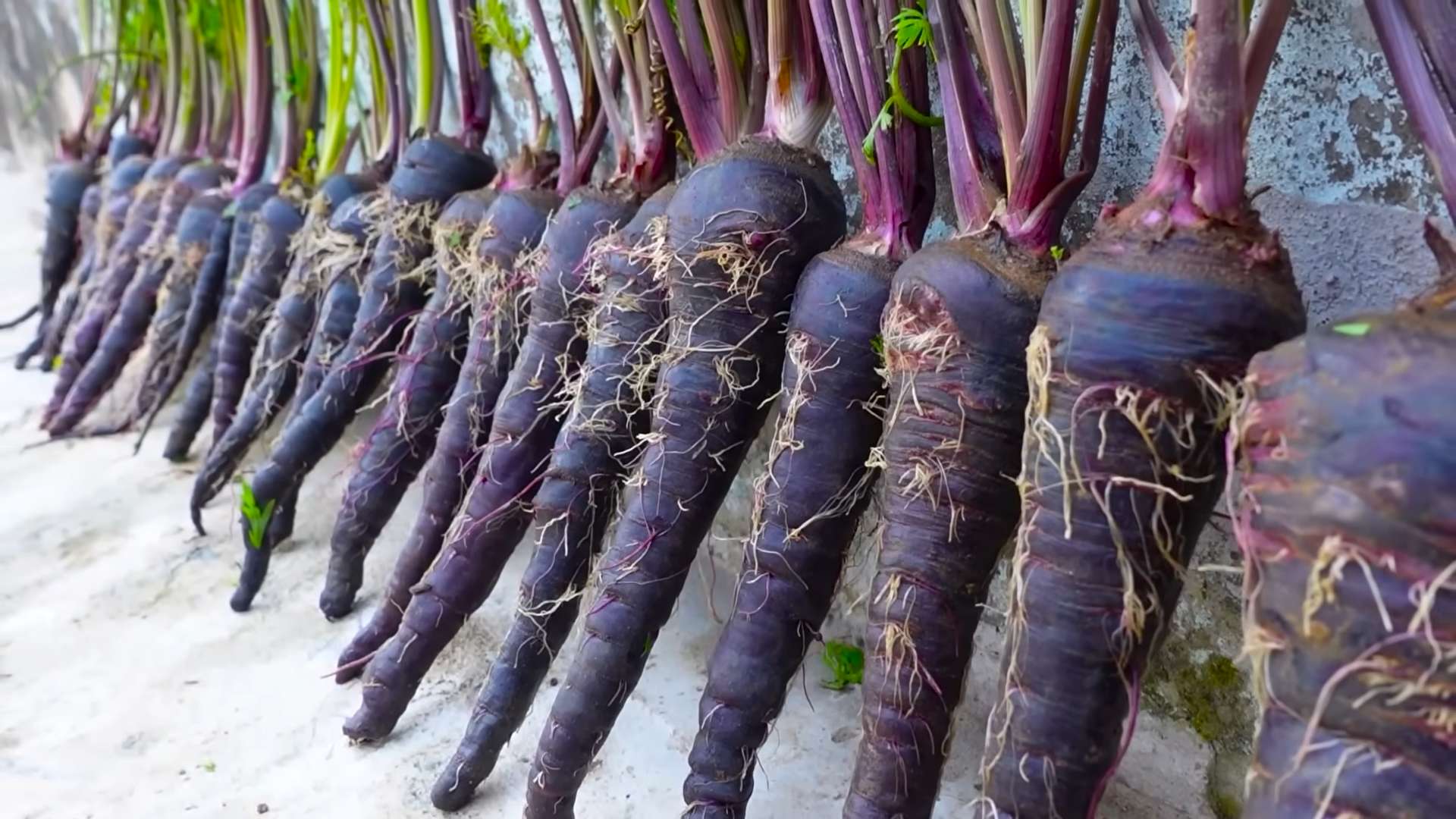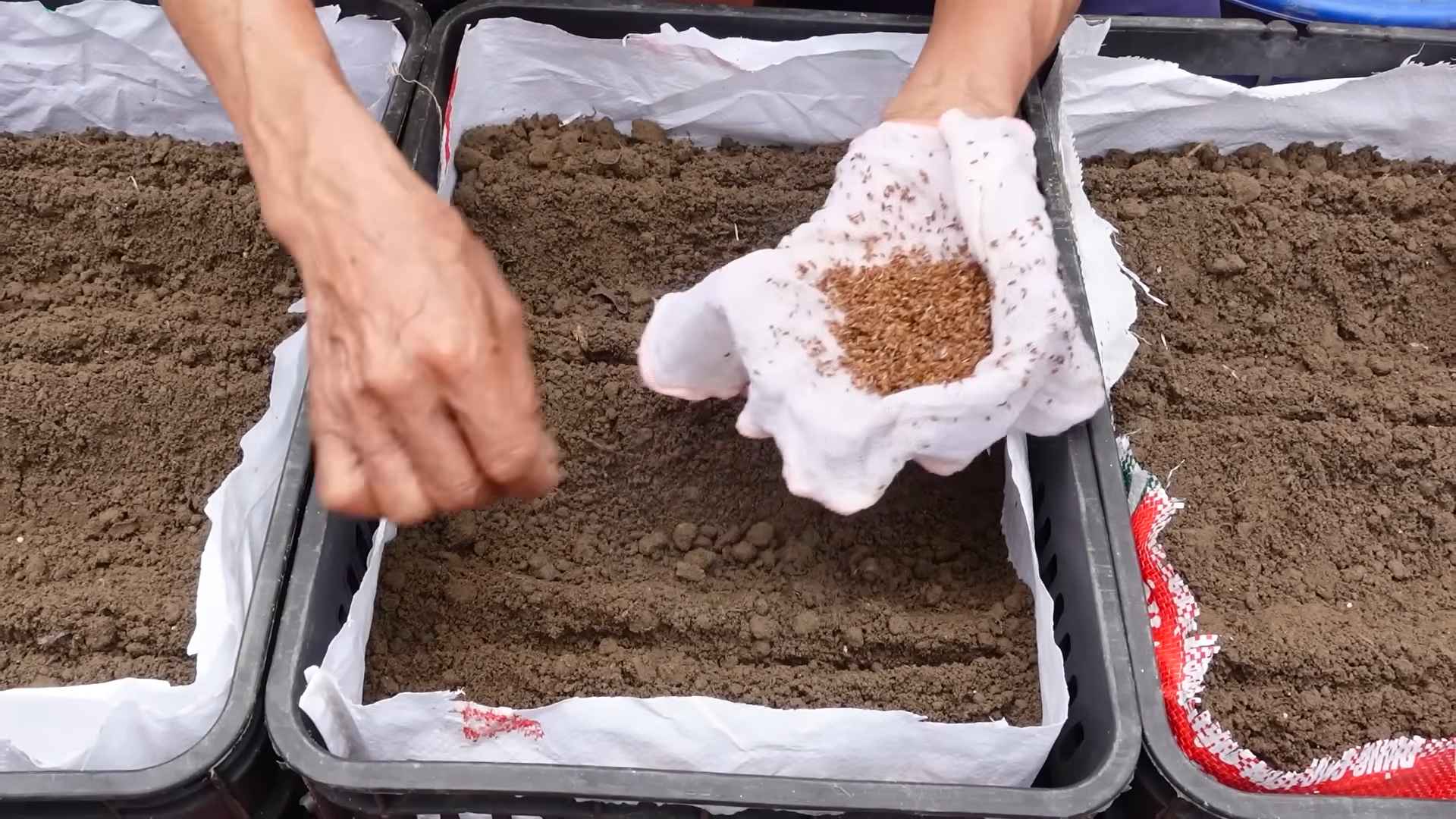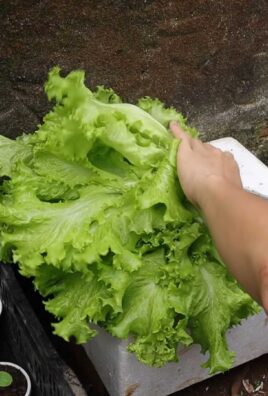Grow Carrots at Home Easily? Absolutely! Imagine plucking vibrant, sweet carrots straight from your own backyard – a taste far superior to anything you’ll find in the grocery store. For centuries, cultivating our own food has been a cornerstone of self-sufficiency and a connection to the earth. From ancient civilizations tending their kitchen gardens to modern-day urban farmers, the desire to nurture and harvest has remained a constant.
But let’s be honest, the idea of growing your own vegetables can sometimes feel intimidating. Where do you even begin? That’s where these simple, yet effective, DIY tricks come in! I’m here to show you that you don’t need acres of land or a green thumb of legend to grow carrots at home easily. Whether you have a sprawling garden, a sunny balcony, or just a few pots on your windowsill, you can enjoy the satisfaction of harvesting your own delicious carrots.
This article is packed with practical tips and hacks that will demystify the process and set you up for success. Forget complicated gardening jargon and endless research – I’ll guide you through each step, from choosing the right carrot variety to protecting your precious crop from pests. So, grab your gardening gloves, and let’s get started on this rewarding journey together!

Growing Carrots at Home: A Beginner’s Guide
Hey there, fellow gardening enthusiasts! I’m so excited to share my experience with growing carrots at home. It’s surprisingly easy and incredibly rewarding to harvest your own sweet, crunchy carrots. This guide will walk you through every step, from choosing the right variety to dealing with common problems. Let’s get started!
Choosing the Right Carrot Variety
Before you even think about planting, you need to pick the right carrot variety. This depends on your climate, soil type, and personal preference. Here are a few popular options:
* Nantes: These are classic, cylindrical carrots with a sweet flavor. They’re relatively short and do well in a variety of soils. They are my go-to choice!
* Danvers: These are longer, tapered carrots, known for their robust flavor and good storage capabilities. They’re a great option if you want to store your harvest for later.
* Chantenay: These are short, thick carrots that are perfect for heavy or rocky soils. They’re also very sweet and flavorful.
* Baby Carrots: These mature quickly and are great for small spaces or impatient gardeners (like me sometimes!).
* Heirloom Varieties: Don’t be afraid to experiment with colorful heirloom varieties like ‘Purple Haze’ or ‘Yellowstone’. They add a fun twist to your garden and your plate!
Preparing the Soil: The Key to Success
Carrots need loose, well-drained soil to grow properly. Rocks and compacted soil can cause them to become stunted or misshapen. Trust me, I’ve learned this the hard way!
* Soil Testing: Ideally, you should test your soil to determine its pH and nutrient levels. Carrots prefer a slightly acidic soil with a pH between 6.0 and 6.8. You can buy a soil testing kit at most garden centers.
* Loosening the Soil: Use a garden fork or tiller to loosen the soil to a depth of at least 12 inches. This is crucial for long, straight carrots.
* Removing Rocks and Debris: Carefully remove any rocks, stones, or other debris from the soil. Even small pebbles can impede carrot growth.
* Adding Organic Matter: Incorporate plenty of compost or well-rotted manure into the soil. This will improve drainage, aeration, and nutrient content. I usually add a generous layer of compost before planting.
* Creating Raised Beds (Optional): If you have heavy clay soil, consider growing carrots in raised beds. This will improve drainage and prevent waterlogging.
Planting Carrot Seeds: Getting Started
Carrot seeds are tiny, so planting them can be a bit tricky. But don’t worry, I’ll guide you through it.
1. Timing is Everything: Carrots are a cool-season crop, so plant them in early spring or late summer for a fall harvest. Check your local frost dates to determine the best planting time. I usually plant my first batch of carrots about 2-3 weeks before the last expected frost.
2. Creating Furrows: Use a hoe or your finger to create shallow furrows in the soil, about 1/4 to 1/2 inch deep. Space the furrows about 2-3 inches apart.
3. Sowing the Seeds: Sprinkle the carrot seeds thinly along the furrows. Carrot seeds are notoriously small, so it’s easy to over-sow. Try to space them about 1/2 inch apart. I find it helpful to mix the seeds with sand to make them easier to handle.
4. Covering the Seeds: Gently cover the seeds with a thin layer of soil.
5. Watering: Water the soil thoroughly but gently. Avoid washing away the seeds. I use a watering can with a rose head to provide a gentle shower.
6. Marking the Rows: Label the rows with the carrot variety and planting date. This will help you keep track of your progress.
Caring for Your Carrot Plants: Nurturing Growth
Once your carrot seeds have sprouted, it’s important to provide them with the right care to ensure a healthy harvest.
* Thinning Seedlings: This is probably the most important step! Once the seedlings are about 1-2 inches tall, thin them to about 1-2 inches apart. This will give the carrots enough space to develop properly. I know it’s hard to pull out those tiny plants, but it’s essential for getting good-sized carrots. You can use small scissors to snip the seedlings at the soil line if you prefer.
* Watering Regularly: Carrots need consistent moisture to grow well. Water them deeply whenever the soil feels dry to the touch. Avoid overwatering, which can lead to root rot.
* Weeding: Keep the area around your carrot plants free of weeds. Weeds compete with carrots for nutrients and water. Hand-pull weeds carefully to avoid disturbing the carrot roots.
* Fertilizing (Optional): If your soil is poor, you can fertilize your carrot plants with a balanced fertilizer. Follow the instructions on the fertilizer package. I usually side-dress my carrots with compost tea every few weeks.
* Mulching: Apply a layer of mulch around your carrot plants to help retain moisture, suppress weeds, and regulate soil temperature. Straw, hay, or shredded leaves are good options.
Dealing with Pests and Diseases: Protecting Your Crop
Carrots are generally pest-resistant, but they can be susceptible to certain problems. Here are a few common issues and how to deal with them:
* Carrot Rust Flies: These flies lay their eggs near the base of carrot plants, and the larvae burrow into the roots, causing damage. To prevent carrot rust flies, cover your carrot plants with row covers. You can also use sticky traps to catch the adult flies.
* Nematodes: These microscopic worms can attack carrot roots, causing them to become stunted and deformed. To prevent nematodes, rotate your crops regularly and incorporate organic matter into the soil.
* Leaf Spot Diseases: These fungal diseases can cause spots on carrot leaves. To prevent leaf spot diseases, avoid overhead watering and provide good air circulation.
* Aphids: These tiny insects can suck the sap from carrot leaves, weakening the plants. To control aphids, spray them with insecticidal soap or neem oil.
Harvesting Your Carrots: The Sweet Reward
The moment you’ve been waiting for! Carrots are typically ready to harvest 60-80 days after planting, depending on the variety.
1. Checking for Readiness: Gently brush away the soil around the base of the carrot to check its size. You can also pull up a few carrots to see if they’re ready.
2. Harvesting: Grasp the carrot firmly at the base of the leaves and gently pull it straight up. If the soil is dry, water it thoroughly before harvesting to make it easier to pull the carrots.
3. Cleaning: Brush off any excess soil from the carrots.
4. Storing: Store carrots in the refrigerator in a plastic bag or container. They can last for several weeks. You can also freeze carrots for longer storage.
Troubleshooting Common Problems
Even with the best care, you might encounter some problems while growing carrots. Here are a few common issues and how to fix them:
* Forked or Stunted Carrots: This is usually caused by rocks or compacted soil. Make sure to prepare the soil properly before planting.
* Bitter Carrots: This can be caused by hot weather or inconsistent watering. Provide consistent moisture and shade during hot weather.
* Cracked Carrots: This is usually caused by uneven watering. Water carrots regularly and deeply.
* Poor Germination: This can be caused by old seeds, dry soil, or cold temperatures. Use fresh seeds, keep the soil moist, and plant at the right time of year.
Enjoying Your Homegrown Carrots
Congratulations! You’ve successfully grown your own carrots. Now it’s time to enjoy the fruits (or rather, vegetables) of your labor. Here are a few ideas:
* Eat them raw: Freshly harvested carrots are incredibly sweet and crunchy.
* Roast them: Roasted carrots are a delicious and healthy side dish.
* Add them to soups and stews: Carrots add flavor and nutrients to soups and stews.
* Make carrot cake: Carrot cake is a classic dessert that’s perfect for using up your carrot harvest.
* Juice them: Carrot juice is a healthy and refreshing drink.
I hope this guide has inspired you to grow your own carrots at home. It’s a rewarding experience that will provide you with fresh, delicious vegetables. Happy gardening!

Conclusion
So, there you have it! Growing carrots at home, far from being an intimidating gardening feat, is surprisingly accessible and rewarding. We’ve walked through the simple steps, from selecting the right carrot variety to nurturing those tiny seedlings into vibrant, crunchy delights. But why should you bother with this DIY project?
The answer is multifaceted. Firstly, the taste of a homegrown carrot, freshly pulled from the earth, is simply unparalleled. It’s sweeter, crisper, and bursting with a flavor that store-bought carrots often lack. Secondly, you have complete control over the growing process. No harsh chemicals, no mystery fertilizers – just pure, natural goodness. You know exactly what’s going into your food, which is a huge win for your health and peace of mind. Thirdly, it’s incredibly satisfying. Watching those little green shoots emerge and then harvesting your own bounty is a truly rewarding experience.
This method of growing carrots at home is a must-try because it empowers you to connect with your food source, reduce your carbon footprint, and enjoy the freshest, most flavorful carrots imaginable. Plus, it’s a fantastic way to get kids involved in gardening and teach them about where their food comes from.
Now, let’s talk about variations and suggestions. Feel free to experiment with different carrot varieties. Nantes are known for their sweetness, while Chantenay carrots are more robust and suitable for heavier soils. Consider companion planting. Marigolds can deter nematodes, while rosemary can repel carrot flies. You can also try succession planting, sowing seeds every few weeks to ensure a continuous harvest throughout the growing season. If you’re short on space, container gardening is a great option. Just make sure your container is deep enough to accommodate the carrot roots.
Don’t be afraid to get your hands dirty and embrace the learning process. Gardening is all about experimentation, and even if you encounter a few challenges along the way, the ultimate reward of homegrown carrots is well worth the effort.
We wholeheartedly encourage you to give this DIY trick a try. Start small, be patient, and enjoy the journey. And most importantly, share your experience with us! We’d love to hear about your successes, your challenges, and any tips or tricks you discover along the way. Post photos of your carrot harvest on social media using #HomegrownCarrots and tag us so we can celebrate your gardening achievements. Let’s build a community of home gardeners and spread the joy of growing our own food. Happy gardening!
Frequently Asked Questions (FAQ)
What is the best time of year to plant carrots?
The best time to plant carrots depends on your climate. In general, carrots are a cool-season crop, so they thrive in spring and fall. For a spring crop, sow seeds 2-3 weeks before the last expected frost. For a fall crop, sow seeds 10-12 weeks before the first expected frost. In warmer climates, you can even grow carrots throughout the winter.
What kind of soil is best for growing carrots?
Carrots prefer loose, well-drained soil that is rich in organic matter. Avoid heavy clay soils, as they can restrict root growth and result in misshapen carrots. Amend your soil with compost or well-rotted manure to improve drainage and fertility. A slightly acidic soil pH of 6.0 to 6.8 is ideal.
How deep should I plant carrot seeds?
Carrot seeds are very small, so they should be planted shallowly. Sow seeds about ¼ inch deep and gently cover them with soil. Keep the soil consistently moist until the seeds germinate, which usually takes 7-21 days.
How often should I water my carrots?
Carrots need consistent moisture to thrive. Water deeply and regularly, especially during dry periods. Aim to keep the soil consistently moist but not waterlogged. Avoid overhead watering, as it can promote fungal diseases. Drip irrigation or soaker hoses are ideal for watering carrots.
How much sunlight do carrots need?
Carrots need at least 6 hours of sunlight per day to grow properly. Choose a sunny location for your carrot patch. If you live in a hot climate, provide some afternoon shade to prevent the soil from drying out too quickly.
Why are my carrots small or misshapen?
There are several reasons why carrots might be small or misshapen. Common causes include:
* **Poor soil:** Heavy clay soils can restrict root growth.
* **Crowding:** Carrots need adequate space to develop properly. Thin seedlings to 1-2 inches apart.
* **Lack of nutrients:** Carrots need sufficient nutrients to grow. Amend your soil with compost or fertilizer.
* **Pests and diseases:** Nematodes and carrot rust flies can damage carrot roots.
How do I thin carrot seedlings?
Thinning carrot seedlings is essential for ensuring that each carrot has enough space to grow. Once the seedlings are a few inches tall, thin them to 1-2 inches apart. Gently pull out the excess seedlings, being careful not to disturb the roots of the remaining plants.
What are some common carrot pests and diseases?
Some common carrot pests include carrot rust flies, nematodes, and aphids. Common diseases include leaf blight and powdery mildew. Use organic pest control methods, such as insecticidal soap or neem oil, to control pests. Ensure good air circulation to prevent fungal diseases.
How do I know when my carrots are ready to harvest?
Carrots are typically ready to harvest 60-80 days after planting, depending on the variety. Check the seed packet for specific maturity dates. You can harvest carrots when they reach the desired size. Gently loosen the soil around the carrots and pull them out by the tops.
Can I grow carrots in containers?
Yes, you can grow carrots in containers. Choose a container that is at least 12 inches deep to accommodate the carrot roots. Use a well-draining potting mix and provide consistent moisture. Container-grown carrots may need more frequent watering and fertilization than those grown in the ground.
How do I store harvested carrots?
To store harvested carrots, remove the tops and gently brush off any excess soil. Store the carrots in a cool, dark, and humid place, such as the refrigerator crisper drawer or a root cellar. You can also store carrots in a container of moist sand or sawdust. Carrots can last for several months when stored properly.
Can I eat the carrot greens?
Yes, carrot greens are edible and nutritious. They have a slightly bitter taste and can be used in salads, soups, or pesto. Make sure to wash the greens thoroughly before eating them.
What are some good companion plants for carrots?
Good companion plants for carrots include onions, garlic, rosemary, sage, and marigolds. These plants can help deter pests and improve the growth of carrots. Avoid planting carrots near dill or fennel, as they can attract carrot rust flies.




Leave a Comment